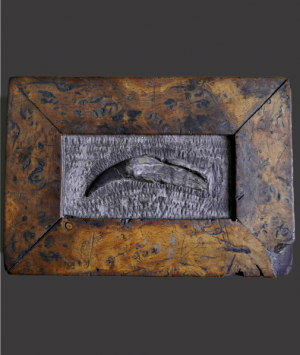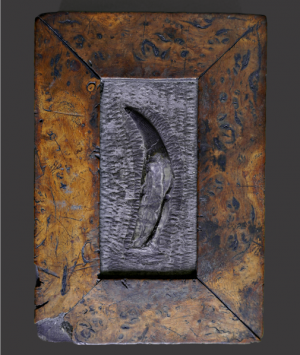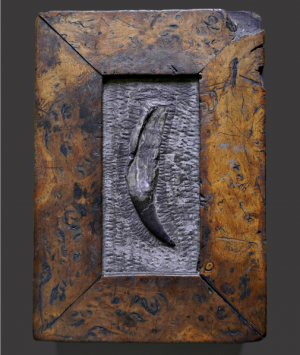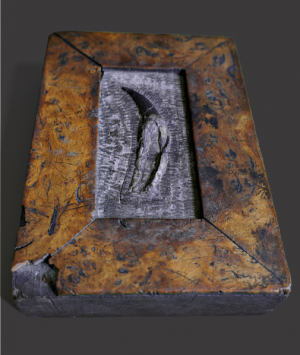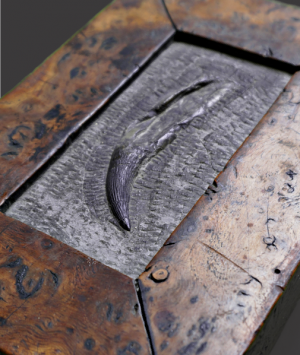Item number: 3110
A Rare Victorian Fossilised Tooth Specimen from the Jurassic Marine Reptile ‘Plesiosaurus Rostratus’
Lower Jurassic Period, Approximately 190,000,000 Years Old
Discovered at Lyme Regis, Dorset
Ex English Private Collection
Although their origin was initially misunderstood, the naturally preserved remains of once living organisms known as fossils have been collected and valued by mankind for thousands of years. Throughout early history their mysterious existence was commonly explained by legends and folklore, often leading to widespread belief that they possessed supernatural or medicinal powers, a legacy which endures among some to this day. In more recent history, before their true nature and significance was fully comprehended, fossils were explained by the clergy and enthusiastically accepted by much of society as evidence substantiating the ‘Great Biblical Flood’.
For inestimable years, fossils had been collected and sold as simple ‘curiosities of nature’, however by the advent of the 19th century interest in collecting and seriously studying them was increasing.
The crumbling ‘Lias’, cliffs belonging to the Dorset seaside town of Lyme Regis and its neighboring village of Charmouth became particularly famous for fossils and its association with pioneering collectors, most notably, Mary Anning. Her spectacular discoveries and remarkably insightful recognition and interpretation of them, were instrumental in enabling eminent scholars of this emerging science to make their achievements. It is thought that the tongue twister, “She sells sea shells on the sea shore”, was invented in reference to her.
Few places can lay claim to such a unique heritage, so inextricably linked to geology and the historical science of palaeontology, as Lyme Regis and Charmouth, they are unquestionably worthy of the profound reverence in which they are held among scholars and enthusiasts of these subjects, both past and present. The diverse range of beautiful, Lower Jurassic fossils found there are often exceptionally well preserved, as such they are regarded as among the finest in the world and have become particularly prized by collectors. Today the area is a ‘World Heritage Site’ and designated site of ‘Special Scientific Interest’, (SSSI).
‘Plesiosaurs’, are one of the most incredible and most famous of all the fossils to be found there, capturing public imagination during the 19th Century due to its radically different, unfamiliar form and illustrated in the literature of the day as demonic, violent beasts which had been created by the devil himself! This sentiment was especially well captured and conveyed in Thomas Hawkins well known illustration, ‘Eternal Darkness’, from his 1840 publication, ‘The Book of the Great Sea Dragons’.
As such, Plesiosaur remains such as this large and particularly well preserved tooth were very highly prized, uncommon finds from the Dorset ‘Lias’. This beautiful specimen is of particular note, belonging to the largest species of Plesiosaur known from this area, ‘Plesiosaurus Rostratus’. It is housed and protected within in its original Victorian wooden display case in typical style of the period.
Dimensions (Approximate)
Case: Height: 13cm, Width: 18.5cm, Depth: 3.7cm
Tooth: Length: 8cm, Width: 1.9cm (across widest point)

